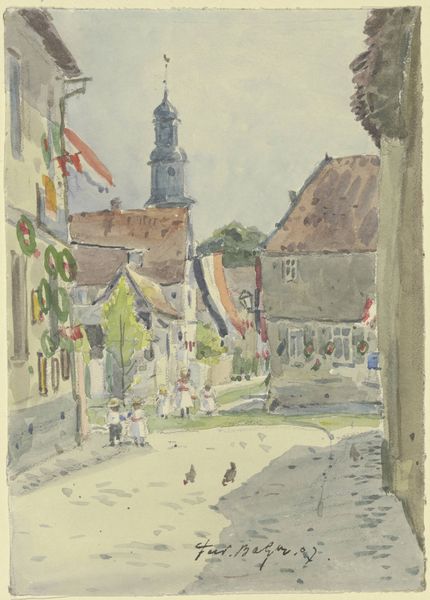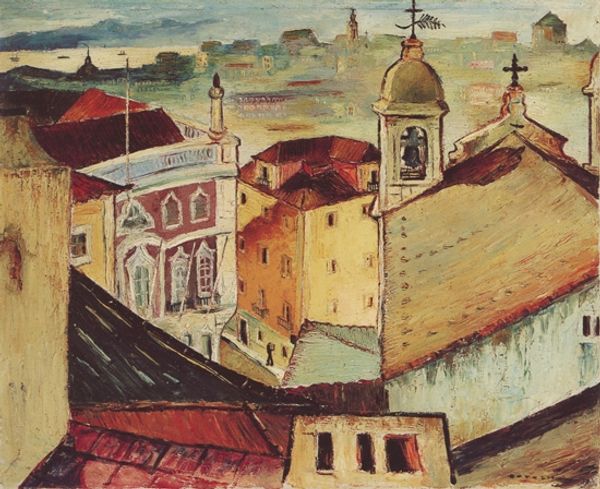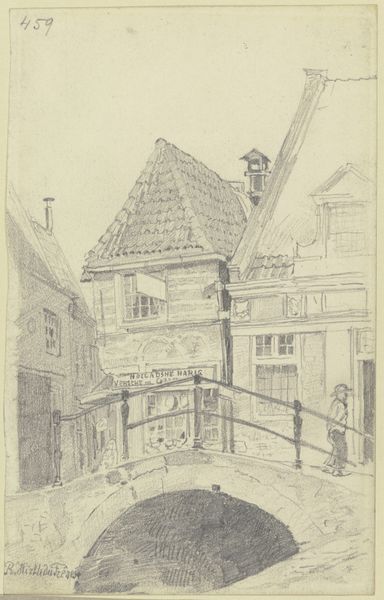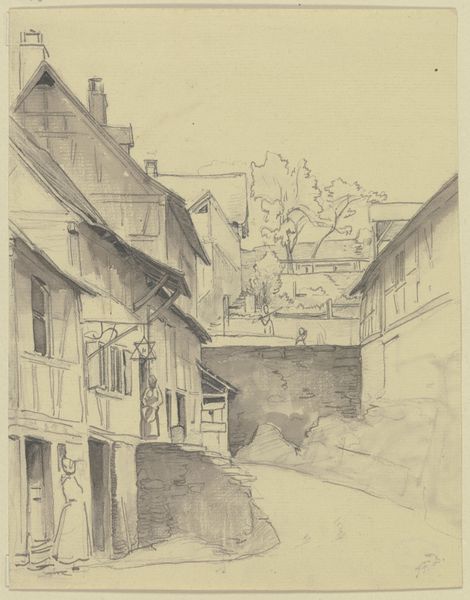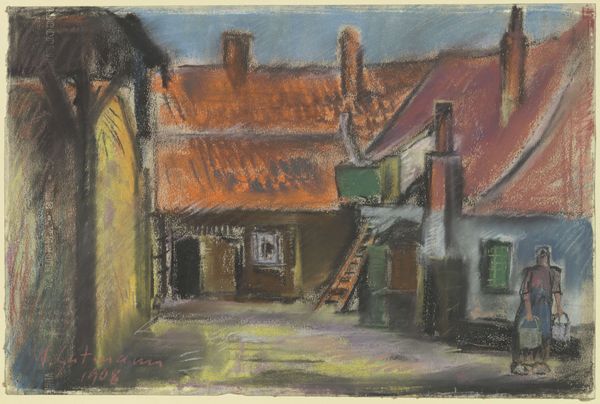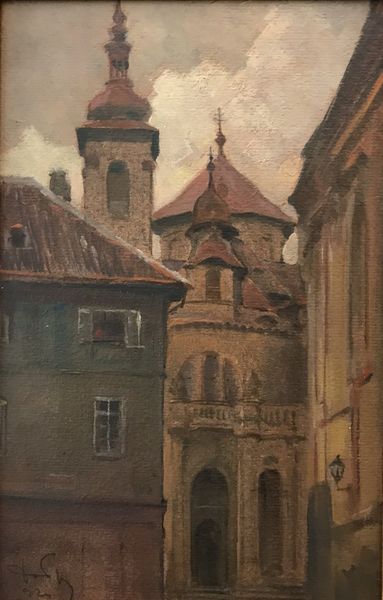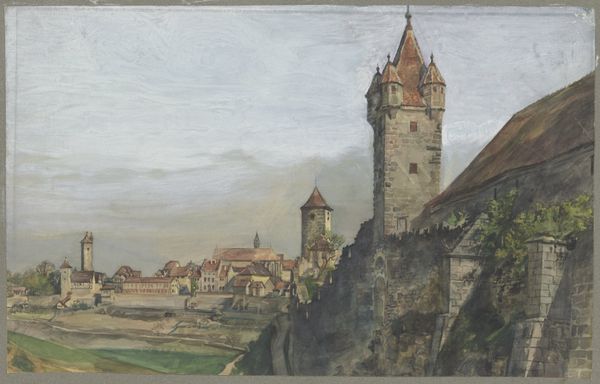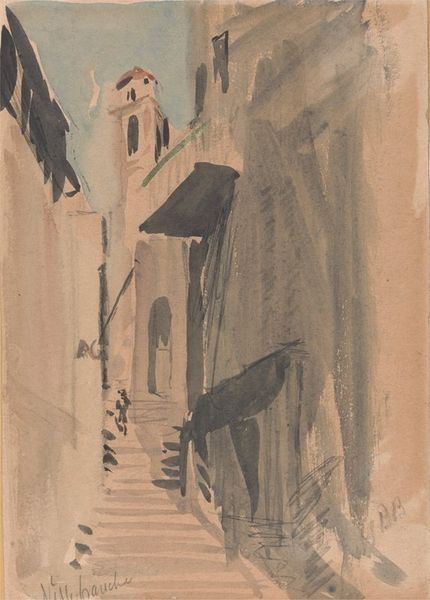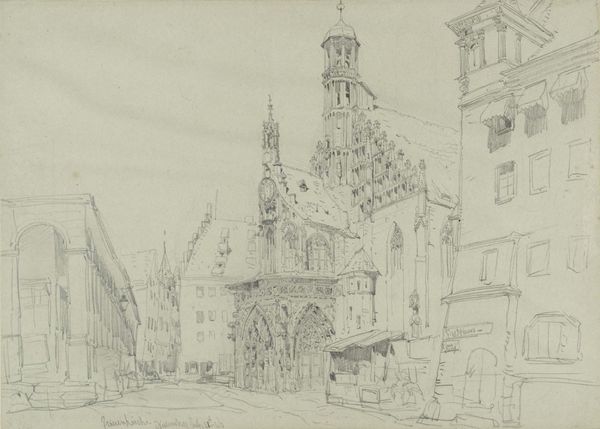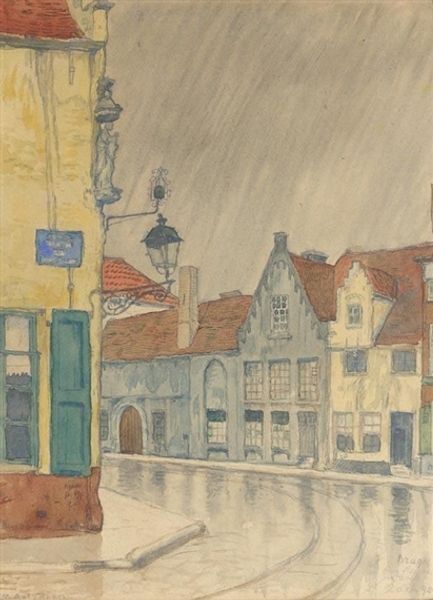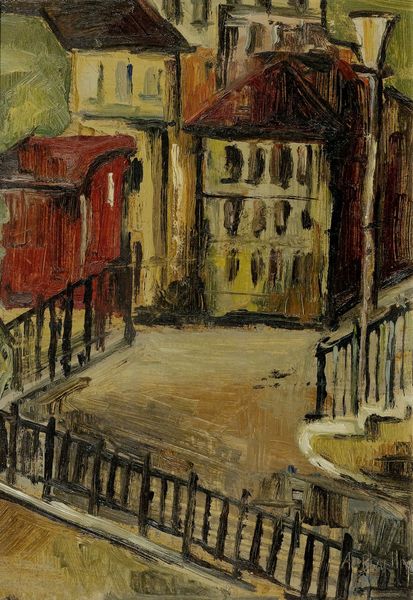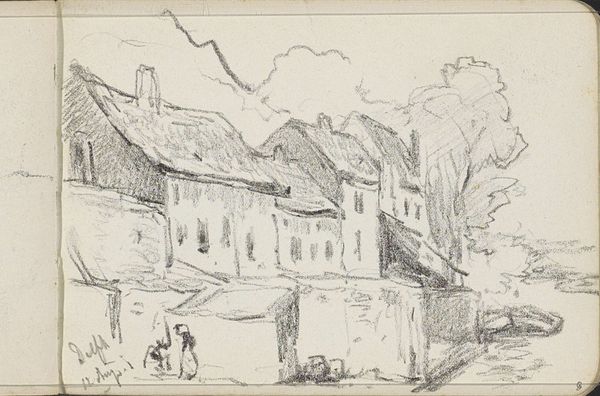
drawing, coloured-pencil, paper, architecture
#
drawing
#
coloured-pencil
#
paper
#
coloured pencil
#
cityscape
#
architecture
#
realism
Copyright: Public Domain
Curator: Look at this captivating drawing by Fritz Hoeber, titled "Rödertor in Rothenburg." The piece, rendered with coloured pencils on paper, depicts a striking cityscape. What are your immediate thoughts? Editor: It evokes a feeling of quiet solemnity. The subdued colour palette and detailed architectural rendering give it a somewhat austere, yet undeniably charming character. I can almost hear the echoes in the narrow street. Curator: It is interesting to note the absence of human figures. How does this affect the image, politically and historically? Does it transform this realistic rendering of architecture into something else? Editor: It certainly highlights the built environment, the very fabric of the town itself. Focusing on buildings reminds me that architectural spaces are never neutral; they shape and regulate social interactions. By emptying the city, we have only its infrastructures to read. Curator: Precisely. Consider the Rödertor, that imposing gate and tower dominating the scene. It speaks of history, of defense, of power structures. And Hoeber’s choice to depict it with such detail emphasizes its role within the urban landscape. Perhaps he is alluding to the way the city itself exerts a presence over its inhabitants? Editor: I agree. And the materiality is really captivating. The texture created by the coloured pencils gives a certain grit, mirroring, in some sense, the historical weight of the place. It seems very different from painting or photographic representations, almost as if the medium adds a layer of lived experience and realism that exceeds its subject. Curator: One might suggest that this artwork, from the collection of Städel Museum, offers us more than just a snapshot of a place. It gives us, maybe inadvertently, a portrait of social structures, preserved in stone and line. Editor: An image where buildings, monuments, and their very presentation tell their own stories, sometimes regardless of whether the storytellers intended this message. Curator: Ultimately, "Rödertor in Rothenburg" becomes a potent reminder of the power of architecture and art to encapsulate and project societal ideologies. Editor: A quietly powerful, deeply considered perspective into both the built environment and its many histories.
Comments
No comments
Be the first to comment and join the conversation on the ultimate creative platform.
